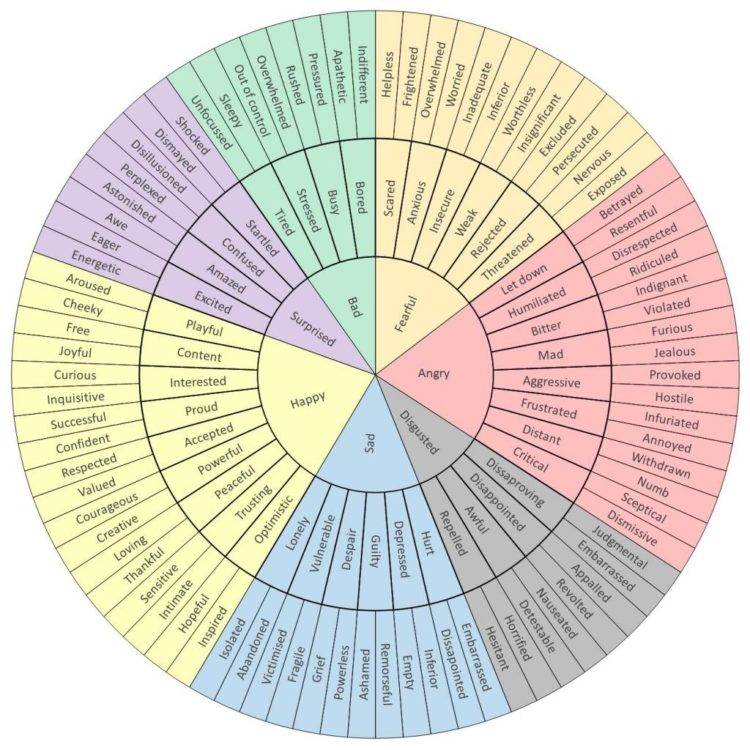How to Use This 'Emotion Chart' to Pick Your Next Quarantine Read
Books have always been a safe haven for me. Ever since I was young, I have found solace in and healing through reading. My healing experience with reading has led me to become a huge advocate for bibliotherapy. According to the American Library Association, bibliotherapy is defined as the use of books for therapeutic purposes. This usually happens when someone identifies with a character in a book, leading to psychological catharsis.
I am so excited to share this easily accessible form of therapy with you! Due to the coronavirus (COVID-19) — the new viral strain in the coronavirus family that affects the lungs and respiratory system — many of us have a lot of extra time on our hands. Now is an excellent time to practice using books as therapy if you are social distancing. Reading is also something you can share with anyone (including little ones) in your home.
If you would like to practice bibliotherapy with your loved ones, use the steps below in a group format to create meaningful connections and discussion! Even if you are not in the space house, you can video chat, text or talk on the phone to create that connection. If you have young children, you can guide their reading by helping them identify their emotions and asking them questions about their book as you read together.
Here are five steps for practicing bibliotherapy:
1. Identify your emotions.
The first step to practicing bibliotherapy is identifying your emotions. When you identify the emotions you are experiencing, you can better understand what you are hoping to get out of reading books as a therapeutic process, while increasing your emotional intelligence. (This is also a great practice to help little ones learn to communicate and identify their emotions.) For example, if you are feeling sad, maybe you want to feel uplifted and inspired through reading. Or, maybe you want to sit with your feeling of sadness and read a book that will amplify this emotion. Use this handy emotion wheel to better identify your feelings!

2. Determine what emotion(s) you would like to amplify.
Now, choose any emotion(s) that you would like to increase. For example, maybe you want to increase feelings of contentment and peace, or you want to explore anxiety or anger. Knowing what emotions you desire will help guide your reading choices. (You can use the emotion wheel for this step as well!)
Pro tip: Horror and thriller novels are excellent reading sources for amplifying and releasing anxiety.
3. Choose a genre.
Determining the genre you would like to explore is your next course of action. Create a list of genres that you associate with the emotion(s) you would like to increase to narrow down your reading choices.Here is a list of the most common book genres:
- Fantasy
- Adventure
- Romance
- Contemporary
- Dystopian
- Mystery
- Horror
- Thriller
- Paranormal
- Historical fiction
- Science Fiction
- Memoir
- Cooking
- Art
- Self-help/Personal
- Development
- Motivational
- Health
- History
- Travel
- Guide/How-to
- Families and Relationships
- Humor
- Children’s
4. Choose a book.
Locate in your personal library any books that are in the genres you have chosen. If you have a Kindle, you can also go to the Kindle store on Amazon.com and type in “Free (genre) Books” – inserting your desired genre into your search. Numerous authors are offering their books for free right now, and this is a great way to find some new reads!
5. Begin reading and document your emotions throughout the process.
As you read, keep a journal and write (or draw) about what the book is making you feel, and how your emotions might be changing or amplifying as you read, as well as any thoughts or insights you are having as you read. If you have others at home with you, you can also discuss your experience with them in a group format. Make this a fun process and allow yourself to be completely absorbed into your book! (If you are practicing this with little ones, you can use art or toys to express thoughts and emotions about what you are reading – you can even make it a show-and-tell process!)
Reading is such a great way to expand your imagination and increase your sense of connection and wellbeing. In our world, we have become so busy that reading is often put on the back burner. Use this time as a gift to dive into the beauty of the literary world and make meaningful connections with loved ones – and with yourself. I hope these steps will help you to take full advantage of the healing power of books!
Concerned about coronavirus? Stay safe using the tips from these articles:
GettyImages photo via samuii

